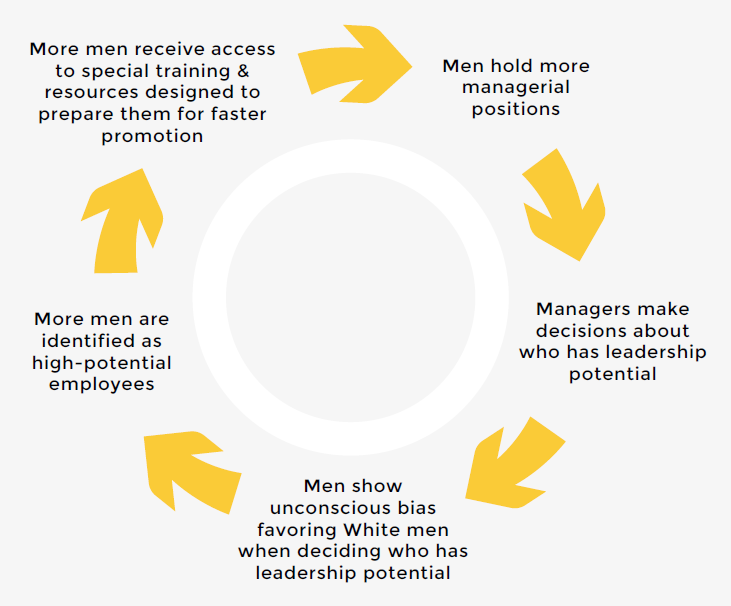Conclusions to Repairing the Broken Rung
We kicked off 2020 with the introduction of Repairing the Broken Rung, our research study with Purdue University and George Mason University. Our focus was to investigate unconscious bias in the workplace by analyzing the “Broken Rung” in the leadership pipelines of over 129 organizations. The “Broken Rung” refers to the inability of women to take the first step up to frontline management at rates equal to men. It’s both is a symptom and a cause of unintentional discrimination in the workplace.
We’ve spent the last six months studying the ins and outs of unintentional workplace discrimination. We’ve broken down exactly what unintentional bias is, uncovered its ramifications, identified its tell-tell signs, and created actionable steps everyone can take to reduce— and ultimately eradicate—it in the workplace.
During these same six months, the business world has transformed right before our eyes. We’ve seen mass shifts to telecommuting during COVID-19, entered into one of the largest recessions in U.S. History, and witnessed harsh social brutalities and injustices. As our world becomes more complex and unpredictable, one thing remains constant: we need strong, compassionate, and innovative leadership now more than ever before.
This starts with Repairing the Broken Rung.
Our Findings
After analyzing 129 companies, our study uncovered that unconscious bias exists across all managers, both male and female.
We found that, on average, managers are three times more likely to identify men as having leadership potential than women. When it comes to race, managers are two times more to identify White men as having leadership potential than Black men. When identifying high-potential employees, male managers are five times more likely to select men than women. Female managers are two times more likely to select men.
In further investigating the causes of these findings, our study revealed that the rung is broken because of the self-perpetuating cycle leading up to promotions:

Implications
The implications of our findings are clear:
- So long as managers who hold unconscious biases continue to be the gatekeepers for deciding who gets access to special development resources, the broken rung will persist.
- If decisions about the next generation of leaders go unchecked, companies will leave potentially more capable talent untapped.
- Companies need to include and evaluate the identification and development of future leaders in equity, diversity, and inclusion efforts.
Actionable Steps
As the war for talent forces organizations to grow future leaders from within, leadership identification and development will become one of the biggest organizational assets. Now is the time to combat bias and discrimination in post-hire talent decisions – especially the identification of high-potential employees and succession planning.
In today’s business world, organizations must use better, unbiased tools for evaluating talent for leadership roles: otherwise, they’ll run the risk of losing profits, losing talented people, and inviting lawsuits. If organizations work to Repair the Broken Rung, people will be promoted based on merit and not gender or race, and the organization, itself, will be better and stronger as a result. The end goal is not just equality, but creating a competitive advantage for the business with the best talent at its helm.
Here’s how organizations can create this competitive advantage:
- To level the playing field for women and minority groups, and to ensure that the most capable individuals are placed in leadership roles, organizations must move away from the HR practices that perpetuate proceduralized discrimination. These include managerial reviews, 9-box assessments, performance ratings, manager nominations, etc.
- Organizations must use more objective measures of employee performance and potential for leadership to ensure that the best leaders are identified and developed, regardless of their social identity. These include behavioral simulations, personality assessments, and aptitude analyses.
If organizations want to remain competitive in an unpredictable world, they need to strategically develop their leaders. They need to ensure that women and minority groups can equally benefit from the special training and resources only reserved for high potential employees and successors. They need to give everyone an equal chance to compete for a promotion. They need to Repair the Broken Rung.
‹ Previous PostNext Post ›



